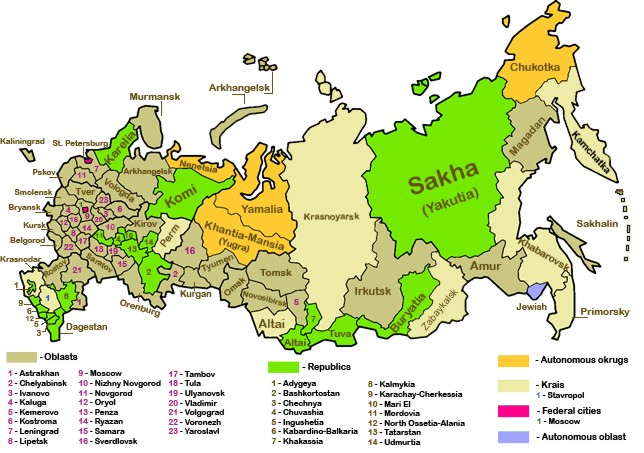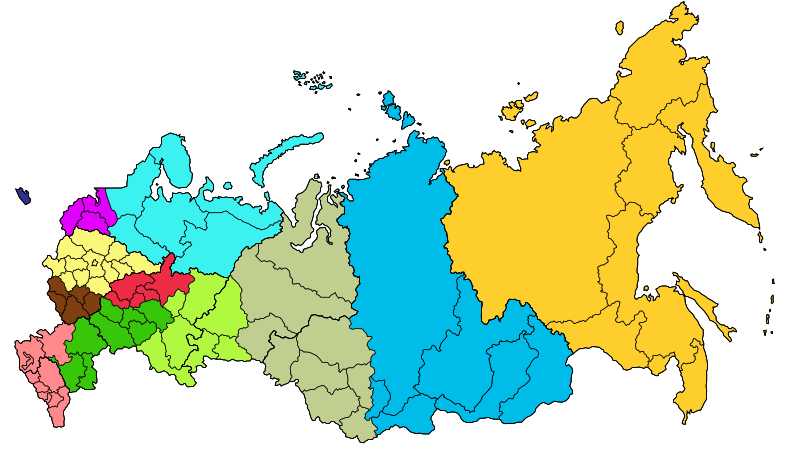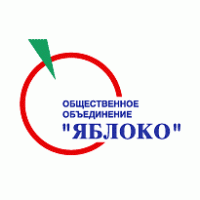
Civil Ensign of the Fascist Dual Diarchy of Russo-Siberia
The Dual-Diarchy of Russo-Siberia (Siberian_Peoples-The Western Russians)
Posts:











Now with Added Clicky Buttons for the Post Links. Go ahead, try them out - Click Away!
Basic Information:
Siberian:
Full Name of Nation: The Fascist Dual Diarchy of Russo-Siberia
Short Name of Nation: Siberia
Demonym: Siberians
Form of Government: Fascist Absolute Dual Diarchy
Head of State: Tsar Grigory Alexeivich Jacksov
Primary Language:
Russian
Secondary/Used Languages:
English
Danish
Religion: Sibero-Russian National
Capital City: Omsk (Seat of Government), Vladivostok (Royal Family Home)
Major Cities: Omsk, Vladivostok, Noril'sk, Tomsk, Irkutsk, Novosibirsk, Kholmsk Nevelsk, Magadan, Anadyr.
Russian:
Full Name of Nation: The Dual Diarchy of Russo-Siberia
Short Name of Nation: Russia
Demonym: Russians
Form of Government: Capitalist Absolute Dual Diarchy
Head of State: Tsar Philip Vasovich Romanov
Primary Language: Russian
Secondary/Used Languages:
English
Ukrainian
Religion: Sibero-Russian National
Capital City: Moscow
Major Cities: Moscow, St. Petersburg, Murmansk, Nizhiny Novgorod, Volgograd, Groznyy.
The countries can be considered a Commonwealth, due to the independent monarchies, however, the unification of the nations via the royal families state that whilst it remains a dual diarchy, all decisions must be decided upon together. The Dual Diarchy is a Commonwealth in the sense that the nations were unified for the greater good of the people, however the primary motive was marriage between royals.
Government Type:
In the Diarcho-Fascist Dual Diarchy of the Siberian Peoples, the government is now Fascist. The nation is now also a Diarchy in order to optimise efficiency and understand two sides of arguments - one side being the Siberian, the other, Russian. We have kept the former monarchs in place rather than bringing in new monarchs, we are also an Enlightened Absolutist Monarchy. All decisions are revised and educated. We ensure that we know everything and anything about any issues or troubles which we encounter, which is why our monarchs must be very highly educated. We are also Fascist, all are even and our people are treated well, but social classes are in place for those to shine and really display themselves. This form of government is known as Jacksovism.
The latest reforms of the Country now dictate that the nation is a Dual Diarchy, after the marriage between Tsarevich Sasha Grigoryvich Jacksov and Jelisavet Romanova, the two nations of the Western Russian Republic (The Western Russians) and the Diarcho-Fascist Empire of the Siberian Peoples, it became a Dual Diarchy.
Whilst Siberia, East of the Ural Mountains, is still a Diarcho-Fascist nation, the Western Russian Republic is still an Absolute Monarchy and does not follow the footsteps of Siberia. The nations have separate governments, however, they are ruled by one Tsar, who is of Siberian Royalty, rather than Russian because Russia was, before the marriage, a Constitutional Monarchy.
Jacksovist Fascism:
Jackovism is the hybrid previously mentioned. It works on the principal that everyone is equal, all have and deserve the same rights and opportunities, yet the strongest, richest and most powerful excel and rise above everyone else on the Social Ladder. Similar to Communism, yet with the chance to thrive in the world.

















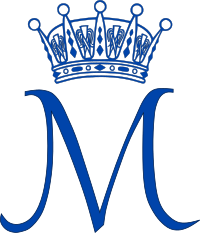


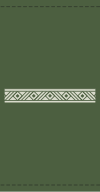


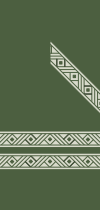














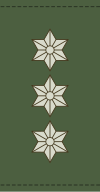





 Gold: Generals
Gold: Generals Light Brown: General Staff; Presidential Guard
Light Brown: General Staff; Presidential Guard Scarlet: Infantry
Scarlet: Infantry Burgundy: Artillery
Burgundy: Artillery Red-Brown: Quartermaster
Red-Brown: Quartermaster Light Orange-Brown: Transport
Light Orange-Brown: Transport Green: Judicial; Military Police
Green: Judicial; Military Police Blue: Engineers; Signals
Blue: Engineers; Signals Light Blue: Cavalry
Light Blue: Cavalry  Light Gray-Blue: Cartography
Light Gray-Blue: Cartography Purple: Aviation; Parachutists (i.e. includes Air Force)
Purple: Aviation; Parachutists (i.e. includes Air Force) Gray: Musicians
Gray: Musicians Light Gray: Armor
Light Gray: Armor Very light Gray: Intelligence
Very light Gray: Intelligence Brownish Gray: Service Corps
Brownish Gray: Service Corps Yellow: Medical; Veterinary
Yellow: Medical; Veterinary


